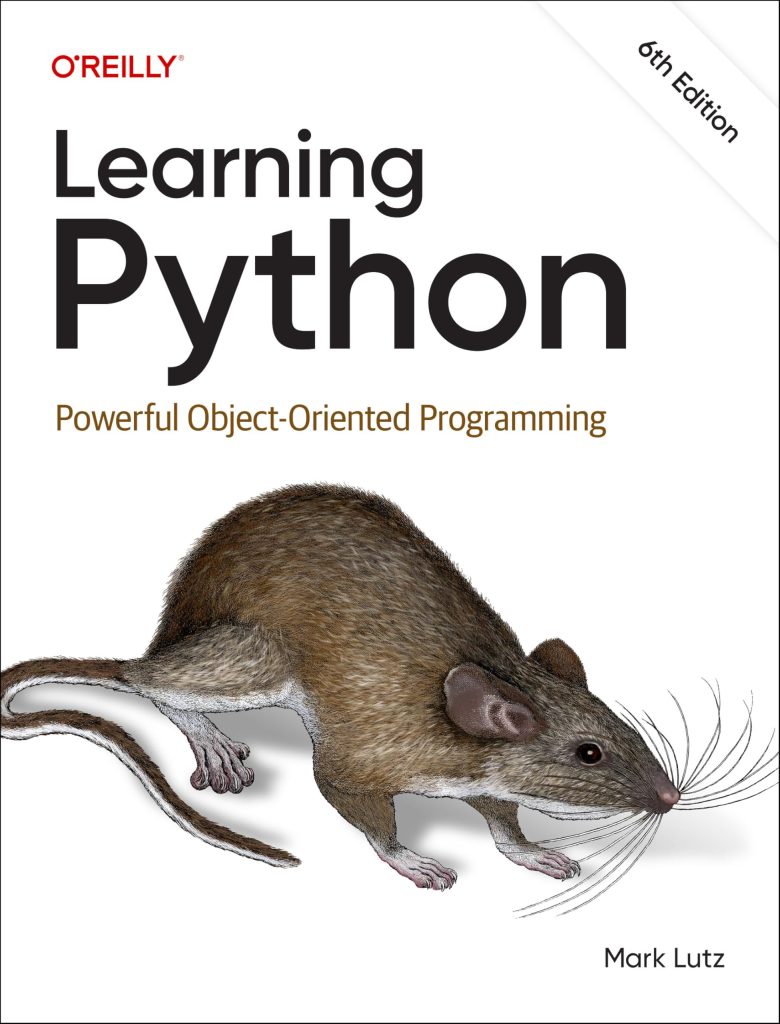
ASCII (American Standard Code for Information Interchange) is a character encoding standard that represents textual data using numeric codes. It encompasses a set of 128 characters, including the English alphabet (both uppercase and lowercase), digits, punctuation marks, and control characters. When working with JSON (JavaScript Object Notation), understanding how ASCII encoding operates is essential because JSON is inherently a text-based data interchange format.
JSON supports Unicode, which means it can handle a broad range of characters beyond the ASCII set. However, when using JSON in certain contexts, such as APIs or systems limited to ASCII, it becomes necessary to ensure outputs are strictly ASCII. This can prevent issues related to character representation and compatibility.
When JSON data includes characters that fall outside the ASCII range (for instance, characters with accents, non-Latin scripts, or any special characters), they may not render correctly if the receiving system is not Unicode-aware. Thus, it’s critical to enforce ASCII encoding to guarantee that your data is universally readable, especially when sharing data with various applications or services.
To ensure that your JSON output is ASCII encoded, Python’s json module provides options within the json.dumps and json.dump functions to handle encoding appropriately. By configuring these functions, you can either escape non-ASCII characters or restrict the JSON output to only include ASCII characters.
The following example illustrates how to serialize a Python dictionary into a JSON formatted string while ensuring it adheres to ASCII encoding:
import json
data = {
"name": "Jürgen",
"age": 30,
"city": "München"
}
# Serialize with ASCII encoding
ascii_json = json.dumps(data, ensure_ascii=True)
print(ascii_json) # Output will convert non-ASCII characters.
In this example, the special characters in the name “Jürgen” and the city “München” would be escaped in the resulting JSON string, making them ASCII-compliant.
Overview of json.dump and json.dumps Functions
The json module in Python provides two primary functions for serializing Python objects into JSON format: json.dump() and json.dumps(). Both functions serve to convert Python dictionaries, lists, or other data structures into a JSON-encoded string or write it into a file, but they differ in their usage and output methods.
The json.dump() function is used when you want to write JSON data directly to a file. This function takes a Python object and a file object as arguments, encoding the Python object as JSON and writing the result to the specified file. Here’s an example:
import json
data = {
"name": "Alice",
"age": 28,
"city": "New York"
}
# Write JSON data to a file
with open('data.json', 'w') as json_file:
json.dump(data, json_file, ensure_ascii=True)
In this example, the json.dump() function writes the JSON representation of the data dictionary to a file named data.json. The ensure_ascii=True argument ensures that any non-ASCII characters in the data are escaped.
On the other hand, the json.dumps() function is used to convert a Python object into a JSON-encoded string. This can be useful when you need to store the JSON data in a variable or display it, rather than writing it to a file. Here’s how to use it:
import json
data = {
"name": "Bob",
"age": 34,
"city": "San Francisco"
}
# Serialize Python object to a JSON formatted string
json_string = json.dumps(data, ensure_ascii=True)
print(json_string) # Output will be a JSON string
In this example, json.dumps() generates a JSON string from the data dictionary. The output can be captured in a variable for further use or manipulation. The ensure_ascii=True option remains essential when you need to ensure all characters are in ASCII format.
Both functions are quite flexible and support additional parameters that allow further customization, such as controlling indentation for pretty printing and managing floating-point representation. However, the essential takeaway is that dump() is for writing directly to files, while dumps() is for generating JSON strings.
Setting Up the Environment for JSON Handling
Before you can ensure ASCII encoding with JSON in Python, it’s crucial to have the right environment set up. Python’s built-in json module is the primary tool you will rely on for handling JSON data. This module provides comprehensive functionalities for JSON serialization and deserialization, so that you can work with JSON in a seamless manner.
To get started, ensure you have Python installed on your system. The json module comes pre-installed with Python, so you won’t need to install any additional packages. You can check your Python installation and its version by running the following command in your terminal or command prompt:
python --version
If Python is correctly installed, you should see the version number printed in your terminal. It is recommended to use a version this is at least 3.0 or higher, as enhancements and features regarding the json module have improved over time in later versions.
Once you have confirmed your Python installation, you can start by importing the json module into your Python script. The import statement is simple:
import json
Next, you’ll want to prepare a sample dataset that you plan to serialize to JSON format. This can be a dictionary or any other data structure that JSON can represent, such as lists or strings. Here’s an example of how to set up a basic dictionary:
data = {
"name": "Luke Douglas",
"age": 45,
"city": "Los Angeles",
"languages": ["English", "Spanish"]
}
In this example, the data dictionary contains various fields that can be converted into JSON. It includes a string, an integer, and a list.
After preparing your dataset, you can begin testing JSON serialization directly in the Python interactive shell or in a script file. To check if everything is working correctly, you can use the json.dumps() function and print the output:
json_string = json.dumps(data) print(json_string)
This code snippet converts the data dictionary to a JSON-formatted string. If you run this, you should see a properly formatted JSON string printed to your console.
Additionally, if you are working within an environment that may require output to a file, you can set up file handling code as follows:
with open('output.json', 'w') as json_file:
json.dump(data, json_file)
In this example, the data dictionary is written directly to a file called output.json. This will create a new file in your current directory containing the JSON representation of your data.
With these steps, your environment is ready for working with JSON data. By setting up your dataset and knowing how to properly use the json module, you’ll be well-equipped to handle ASCII encoding in your JSON outputs effectively.
Configuring json.dump for ASCII Output
# Configure json.dump for ASCII output
import json
data = {
"title": "Café",
"location": "São Paulo",
"description": "A popular place for enjoying coffee."
}
# Write JSON data to a file with ASCII encoding
with open('ascii_data.json', 'w') as json_file:
json.dump(data, json_file, ensure_ascii=True)
In this example, the json.dump() function is used to write the contents of a dictionary to a file named ascii_data.json. Even though the original string “Café” contains a non-ASCII character (é), using ensure_ascii=True converts this character into its Unicode escape sequence, ensuring the output is entirely ASCII compliant. The resulting content of ascii_data.json will appear as follows:
{
"title": "Cafu00e9",
"location": "Su00e3o Paulo",
"description": "A popular place for enjoying coffee."
}
By enabling ensure_ascii, the json.dump function meticulously escapes all non-ASCII characters, replacing them with their Unicode equivalents. This guarantees that when the JSON data is read by another application that may not support Unicode, it can correctly interpret and display these characters.
When configuring json.dump for ASCII output, it’s important to ponder the implications if your data primarily consists of non-ASCII characters. While escaping characters allows for compliance with ASCII standards, it can complicate readability for humans. Hence, you should assess the target audience and systems involved in consuming the JSON data.
As you continue to work with JSON and ASCII, keep in mind that ensuring compatibility through proper configuration of methods like json.dump can help prevent data integrity issues and facilitate smoother interoperability between different systems and applications.
Configuring json.dumps for ASCII Output
import json
data = {
"name": "Français",
"age": 25,
"city": "Montréal"
}
# Ensure the output is ASCII encoded
ascii_json_string = json.dumps(data, ensure_ascii=True)
print(ascii_json_string) # Output will escape non-ASCII characters
When working with the `json.dumps()` function for ASCII output, using the `ensure_ascii` parameter is vital. When this parameter is set to `True`, any characters outside of the ASCII range are escaped to ensure that the resulting JSON string only contains characters that are compatible with ASCII encoding.
For instance, ponder the following Python dictionary:
data = {
"movie": "Café de Flore",
"rating": 4.5,
"released": 2011
}
This dictionary has a name of a movie that contains an accent (é). To serialize this to a JSON formatted string while maintaining ASCII compliance, you can do:
ascii_json_string = json.dumps(data, ensure_ascii=True) print(ascii_json_string)
The output will look like this:
{"movie": "Cafu00e9 de Flore", "rating": 4.5, "released": 2011}
Here, the character “é” is escaped as “u00e9” in the resulting JSON string. This transformation guarantees that the JSON output remains valid under ASCII encoding standards, preventing potential misinterpretations or data loss when interacting with systems that may not handle UTF-8 characters properly.
If you want to see how the output would differ with `ensure_ascii` set to `False`, you can try this:
ascii_json_string_no_escape = json.dumps(data, ensure_ascii=False) print(ascii_json_string_no_escape)
With `ensure_ascii` set to `False`, the output would preserve the original characters:
{"movie": "Café de Flore", "rating": 4.5, "released": 2011}
Keep in mind that while the latter output is easier for human readability, it poses a risk of compatibility issues when being processed by non-Unicode aware applications.
In summary, configuring `json.dumps()` for ASCII output is a simpler yet essential process for ensuring compatibility, especially when your data contains non-ASCII characters. By using `ensure_ascii=True`, you can safely convert your Python objects to JSON while adhering to ASCII encoding requirements. This approach enables smoother data interchange across various systems without the hassle of character encoding conflicts.
Common Pitfalls and Troubleshooting
When dealing with JSON serialization in Python, especially when ensuring ASCII encoding, there are several pitfalls and common issues that developers may encounter. Understanding these challenges can significantly ease the process of working with data and ensure smoother integrations across different systems.
One common pitfall occurs when non-ASCII characters are not properly handled. If the `ensure_ascii` parameter is set to `False` (or not used), characters that fall outside the ASCII range can be included directly in the output. This can lead to unexpected results, particularly when the serialized JSON is processed by systems that do not support Unicode. For example:
import json
data = {
"greeting": "Hola, señor!"
}
# Incorrectly allowing non-ASCII characters
json_string = json.dumps(data, ensure_ascii=False)
print(json_string)
This output will be:
{"greeting": "Hola, señor!"}
If this string is passed to a non-Unicode aware interface, it may not display correctly, potentially resulting in data loss or corruption. To avoid this, always set `ensure_ascii=True` when handling data that may traverse systems with varied encoding support.
Another potential issue arises from using complex data structures that combine strings and other types like lists or dictionaries. When nested structures contain non-ASCII characters, failure to properly configure `json.dump()` or `json.dumps()` can lead to inconsistencies:
data = {
"brief": "Café et Crème",
"items": ["Croissant", "Baguette", "Tart"]
}
# JSON output without ASCII compliance
complex_json_string = json.dumps(data, ensure_ascii=False)
print(complex_json_string)
This will output the data correctly for human readability but could cause problems in certain systems:
{"brief": "Café et Crème", "items": ["Croissant", "Baguette", "Tart"]}
Another issue to think is different versions of Python. Although the json module has been part of Python’s standard library for quite some time, behavior can vary between major versions. For instance, Python 2.x and 3.x have different default string handling approaches. Make sure you’re testing the output in the same version where the application will run.
When troubleshooting JSON serialization, especially involving ASCII encoding, it’s useful to validate the output against a JSON validator or linter. These tools help identify structural issues within the JSON output that may not be immediately apparent and can highlight encoding issues or improper formatting.
Furthermore, error handling becomes essential, particularly when writing JSON data to files. It’s worth wrapping the `json.dump()` function in a try-except block to catch potential exceptions related to file I/O or JSON serialization:
try:
with open('output.json', 'w') as json_file:
json.dump(data, json_file, ensure_ascii=True)
except IOError as e:
print(f"File I/O error: {e}")
except TypeError as e:
print(f"Serialization error: {e}")
This practice ensures that you can diagnose issues effectively and handle any potential failures gracefully. By being aware of these common pitfalls in JSON handling and ASCII encoding, you can better debug and improve your data interchange processes, ensuring robust applications that handle text data properly across diverse systems.
Best Practices for Working with JSON and ASCII Encoding
When working with JSON and ensuring ASCII encoding, adhering to best practices can significantly enhance data integrity and compatibility. Here are several best practices to keep in mind:
- Ensure that you consistently use the `ensure_ascii=True` parameter in both
json.dumps()andjson.dump()functions. This guarantees that your JSON output is ASCII-compliant, preventing any issues arising from non-ASCII characters when the data is processed by systems that may not support Unicode.
For example:
import json
data = {
"message": "Hello, 世界!"
}
# Ensure ASCII encoding
ascii_json = json.dumps(data, ensure_ascii=True)
print(ascii_json) # Output will be {"message": "Hello, u4e16u754c!"}
- Utilize JSON validators or linters to validate your JSON strings. These tools assure that the generated JSON is well-formed and adheres to standards. This practice helps catch issues early, minimizing compatibility problems with external systems.
For example, you can test your JSON output in online JSON validation tools to ensure they’re structurally sound.
- Whenever possible, document any character encoding requirements for your APIs or data interchange formats. Clearly specifying whether ASCII or Unicode is expected will help developers consuming the API make informed decisions on handling data.
- Stick to consistent data structures within your application when preparing JSON outputs. Ensure that the keys and values are appropriately formatted and that you minimize the nesting of non-ASCII characters. Avoid complex structures that can lead to confusion and potential encoding issues.
For instance:
data = {
"food": {
"dish": "Tacos",
"ingredients": ["Tortilla", "Bœuf"]
}
}
# Serialize with ASCII compliance
ascii_json = json.dumps(data, ensure_ascii=True)
print(ascii_json) # Output will escape non-ASCII characters
- Incorporate robust error handling when performing JSON serialization or writing data to files. Wrap your
json.dump()orjson.dumps()calls in try-except blocks to catch any potential exceptions, such asIOErrororTypeError.
Ponder the following example:
try:
with open('output.json', 'w') as json_file:
json.dump(data, json_file, ensure_ascii=True)
except IOError as e:
print(f"File error: {e}")
except TypeError as e:
print(f"Serialization error: {e}")
- Finally, always test your JSON output across the systems that will consume it. This ensures that your encoding choices are compatible and that no data corruption occurs. Be especially cautious if your JSON data is intended for legacy systems or third-party APIs that may have specific character encoding constraints.
By following these best practices, you can ensure a smoother experience when working with JSON data and ASCII encoding, and facilitate better data interchange with other systems.






